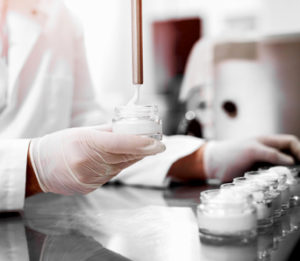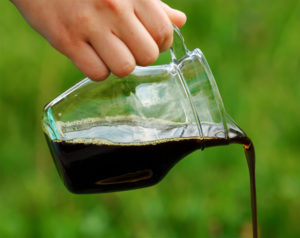 Here at FILAMATIC, we work with customers across industries with many different types of product applications. Traditionally, one of many topics discussed with a potential project is the type of product and product viscosity that they have. In most cases, we deal with customers well aware of their product viscosity and what it means to their manufacturing process. However, new and emerging industries create great opportunities for new and emerging businesses, so sometimes we cross paths with businesses not fully aware of the impact of their product’s viscosity.
Here at FILAMATIC, we work with customers across industries with many different types of product applications. Traditionally, one of many topics discussed with a potential project is the type of product and product viscosity that they have. In most cases, we deal with customers well aware of their product viscosity and what it means to their manufacturing process. However, new and emerging industries create great opportunities for new and emerging businesses, so sometimes we cross paths with businesses not fully aware of the impact of their product’s viscosity.
Today, we’ll talk about viscosity, what it is, what it means to your manufacturing and packaging processes, and give you a general rating with some examples of products and their viscosity ratings.
What is viscosity?
What is viscosity? The best way to describe viscosity is a “measure of a liquid’s resistance to flow, or the measure of internal friction”.
Viscosity is caused by the cohesive forces in the molecular structure present in a liquid. When someone refers to a liquid as having a low viscosity, it will flow more easily. For instance, water and liquor flow easily and have low viscosity ratings.
If someone says that a liquid has a high viscosity, it is going to flow much more slowly and not as easily. A good example would be gels, syrups and lotions that do not flow quickly or easily.
How do we describe viscosity?
In the liquid filling industry, we typically use three main terms to describe the viscosity of a liquid product;
1. Water-Thin – Free flowing characteristics with little resistance to flow.
2. Semi-Viscous – A liquid somewhat thicker in nature.
3. Viscous – A liquid that is thick and does not move easily.
How to measure viscosity?
How do you measure the viscosity of a liquid? Generally speaking, the process and tools that you can use to measure viscosity are basic. You should find;
• A glass or plastic tube
• Steel or marble balls
• Stopwatch or some sort of timer
• And your liquid to be tested
To conduct the viscosity rating using the above tools;
1. Carefully fill the liquid into a glass or plastic tube
2. Drop a steel or marble ball into the tube
3. Use the stopwatch and time how long it takes for the ball to drop to the bottom of the tube
If the ball drops quickly, the liquid has a lower viscosity. If the ball drops slowly, the liquid has a higher viscosity. This is a very basic, simple method to test the viscosity of a liquid and something that can be easily done with little investment.
How to measure viscosity properly using a viscometer.
 When looking to measure viscosity informally and on the cheap, the falling ball in a tube method works well at home. However, if you need an exact viscosity rating (centipoise) for your liquid product, you may want to consider purchasing a real measuring device.
When looking to measure viscosity informally and on the cheap, the falling ball in a tube method works well at home. However, if you need an exact viscosity rating (centipoise) for your liquid product, you may want to consider purchasing a real measuring device.
These tools are called viscometers and measure the force it takes to move through a liquid. There are many different types of viscometers that you can buy and use to measure different types of viscosities. Some of the available viscometers on the market are:
• Bubble, and rectangular-slit viscometers
• Electromagnetically spinning-sphere viscometers
• Rotational viscometers
• Vibrational viscometers
• Oscillating-piston viscometers
• Falling-piston viscometers
• Falling-ball viscometers (like we discussed above but with better measuring capabilities)
What is Centipoise?
You heard the above reference to centipoise, but what is centipoise? In the liquid filling and science community, centipoise (CPS) is a commonly used term as a viscosity value for a liquid.
Like we already discussed, a fluid with a low centipoise rating will flow much more easily. For instance water has a CPS rating of 1.
A high centipoise rating is going to flow much slowly. For instance, Peanut Butter has a viscosity rating of 250,000.
Examples of Centipoise Ratings…
As we said above, Liquid Centipoise (CP) is how we technically measure viscosity in the liquid filling business.
Below are a few examples of everyday products and their CP rating:
- Peanut Butter – 250,000 – Viscous
- Tomato Paste – 190,000 – Viscous
- Petroleum Jelly – 64,000 – Viscous
- Ink (paste) – 45,000 – Viscous

- Oil-SAE – 140 2,200 – Viscous
- Shampoo – 800 – 1,000 – Viscous
- Hand/Body Lotion – 700 – Semi-Viscous
- Plastisol – 700 – Semi-Viscous
- Oil-SAE 90 – 590 – Semi-Viscous
- Spar Varnish – 420 – Semi-Viscous
- Soybean Oil – 160 – Semi-Viscous
- Mable Syrup – 144 – Semi-Viscous
- Oil SAE 20 – 125 – Semi-Viscous
- Corn Oil – 72 – Semi-Viscous
- Liquid Ink – 25 – Viscous
- Colognes/Perfumes – 1-7 -Viscous
- Water – 1 – Viscous
- Sulphuric Acid – 0.2 -Viscous
Now you can impress your friends with the centipoise ratings of different types of fluids. You will be great at trivia night!
For over 70 years, FILAMATIC has provided the widest range of liquid filling equipment while delivering the lowest cost of ownership to our customers. We excel in flexible, customized solutions for every stage of your business growth. Whether you require a single machine, a complete turnkey solution, or a fully-automated, integrated Monobloc system, we have the experience to ensure your satisfaction is exceeded.
For more information on liquid viscosity or liquid filling solutions, please call 866.258.1914 or visit www.filamatic.com/contact-us.
